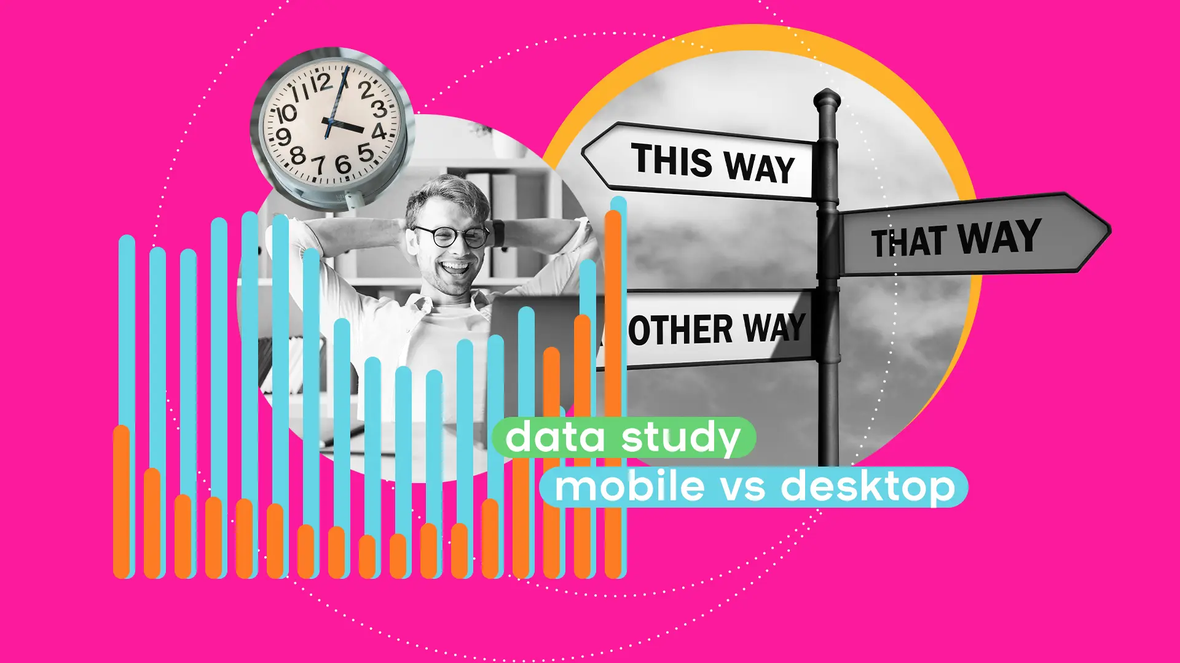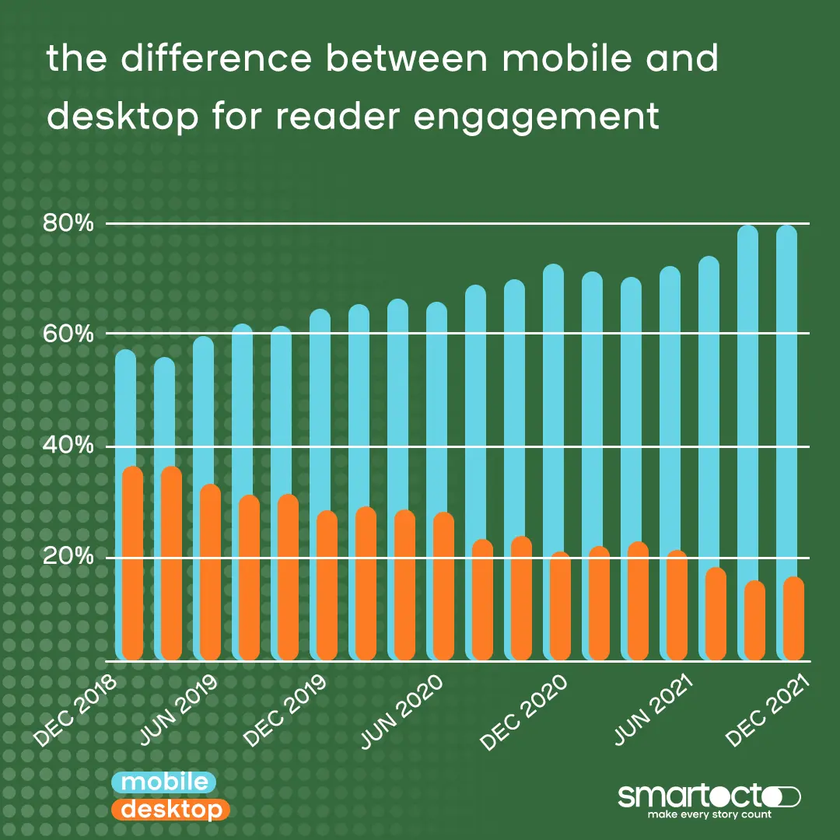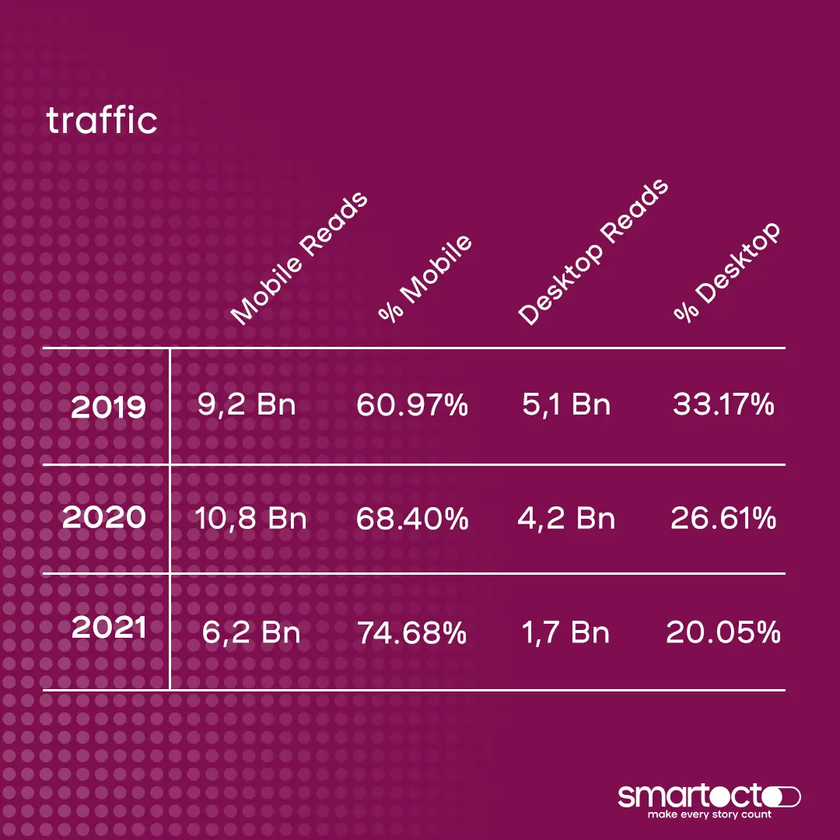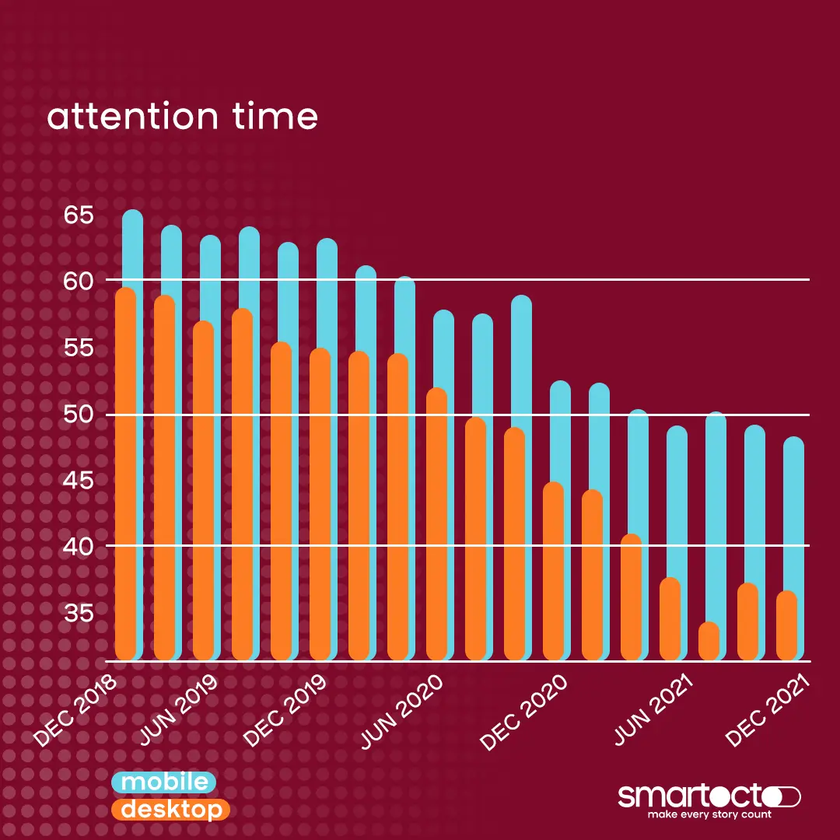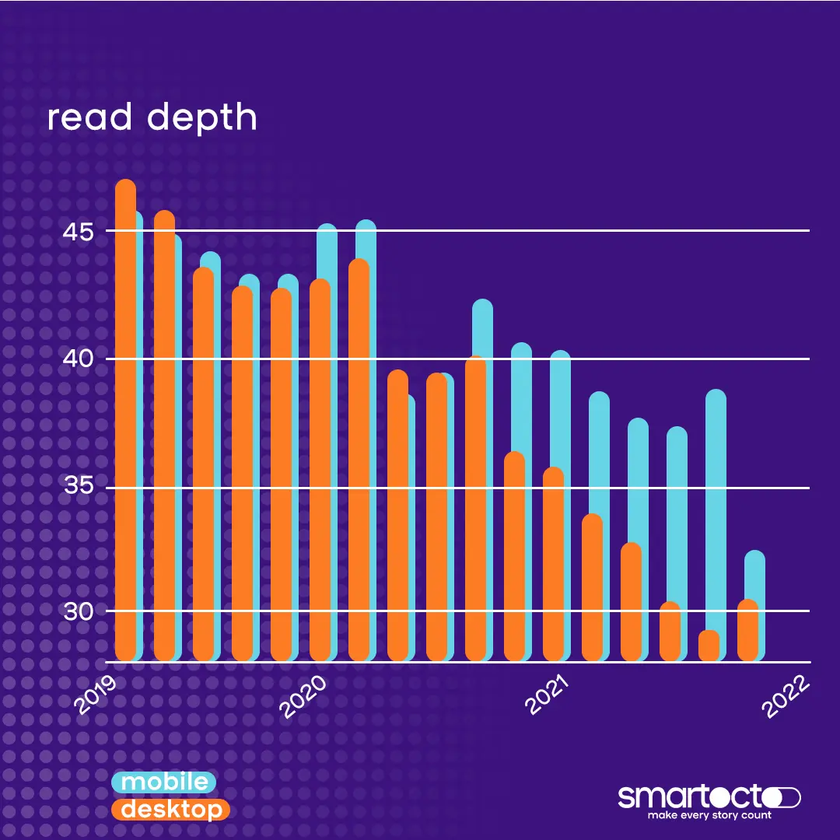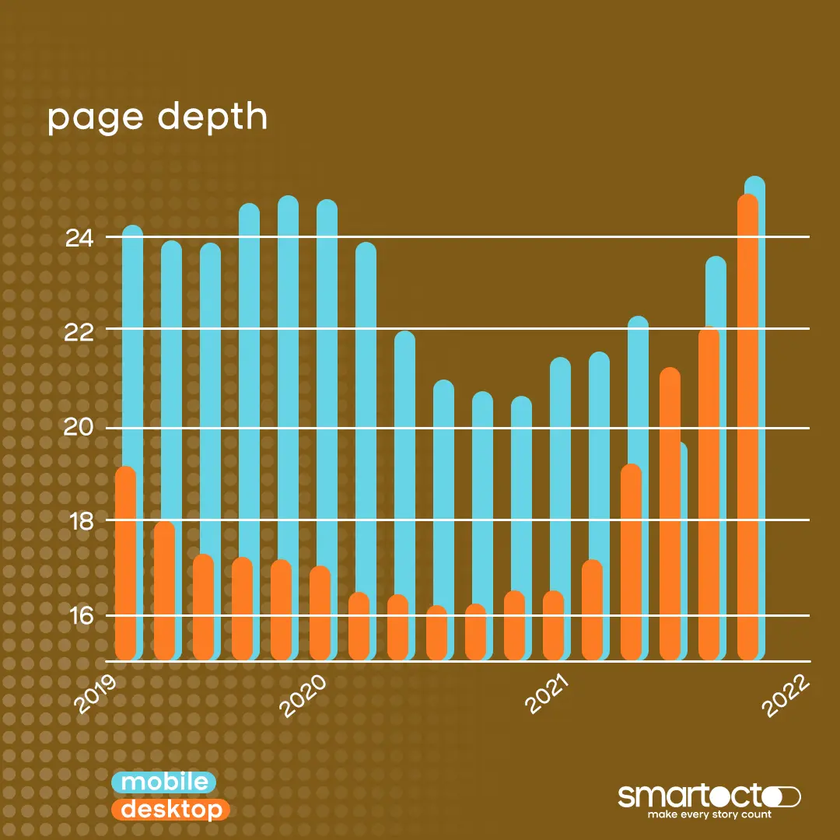One of the biggest changes - and challenges - for newsrooms over the past twenty years has been the increased number of options readers have to read the news. Once, readers got the news via the newspaper and that was that. Now, articles can be read via an app, the website, other (social media) platforms, broadcast media, newsletters, or even via influencers. And, as if this wasn’t confusing enough, newsrooms face an extra layer of challenge because audiences can do all of these things via their desktops, tablets or mobile devices - and audience behaviour differs on each.
But, it’s no good talking in generalities. We need to be more specific. What’s the actual situation? Is there really a difference between audience behaviour on different devices? Is content published and distributed differently between the two? And, can we draw any conclusions from this? We asked our Labs team to look at article reads on mobile and desktop between December 2018 and December 2021, and the results are striking.
